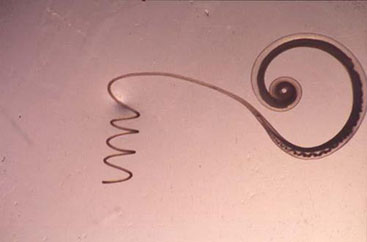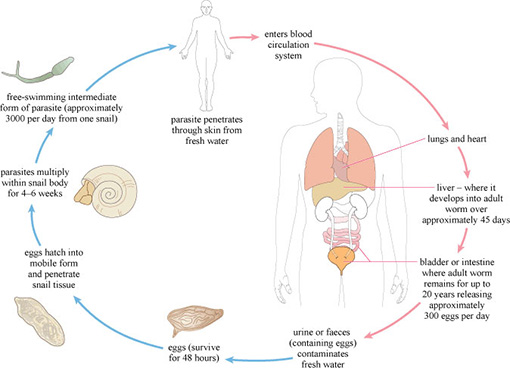2.3.3 Parasitic worm infections
People become infected with intestinal parasitic worms (helminths) through water or food that has been contaminated with faecal matter from an infected person. Infection occurs when these parasites get into the intestinal tract of a new host. Even though there are numerous parasites that infect humans, those most common in Ethiopia are the roundworms that cause ascariasis (Figure 2.5) and trichuriasis (Figure 2.6). Both of these diseases are spread through ingestion of contaminated food and water, and also poor hygiene behaviour. Children are more likely to be affected because their immune systems are not fully developed; they constitute important reservoirs of the infections.


Schistosomiasis, also known as bilharzia, was mentioned earlier in this study session. It is also a disease caused by parasitic worms but in this case they do not get into the body from ingesting contaminated water or food. This is a water-based, not a waterborne disease. The Schistosoma parasitic worm enters the body by penetrating through the skin. It has a complicated life cycle and spends part of its life in a human body and part in a particular species of water snail, as shown in Figure 2.7.
The eggs of the worm are released into water bodies through the urine or faeces of an infected person and they then infect the snails, the intermediate host. Snails are more often found in slow-flowing or standing water where water plants are growing, rather than in rapidly flowing water. If the environmental conditions are not suitable for the snails, they will not survive and the disease cycle can be broken. In preventing water-based diseases like schistosomiasis, it is important to focus interventions on still waters of lakes and ponds and water channels used for irrigation, where vegetation is growing.
2.3.2 Malaria

